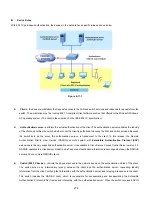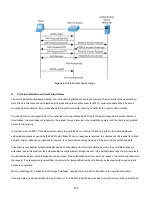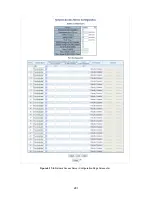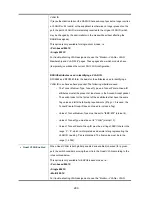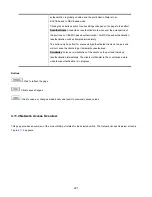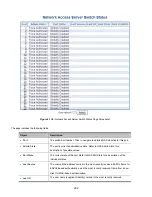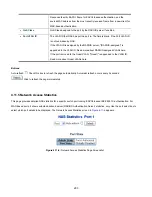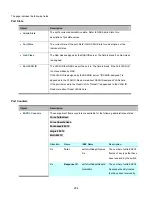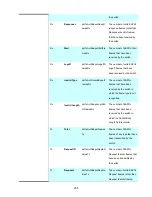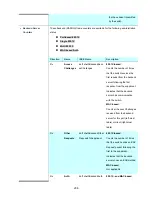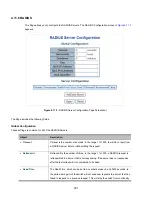
287
on the same port at the same time. Each supplicant is authenticated individually
and secured in the MAC table using the Port Security module.
In Multi 802.1X it is not possible to use the multicast BPDU MAC address as
destination MAC address for EAPOL frames sent from the switch towards the
supplicant, since that would cause all supplicants attached to the port to reply to
requests sent from the switch. Instead, the switch uses the supplicant's MAC
address, which is obtained from the first EAPOL Start or EAPOL Response
Identity frame sent by the supplicant. An exception to this is when no supplicants
are attached. In this case, the switch sends EAPOL Request Identity frames
using the BPDU multicast MAC address as destination - to wake up any
supplicants that might be on the port.
The maximum number of supplicants that can be attached to a port can be
limited using the Port Security Limit Control functionality.
MAC-based Auth.
Unlike port-based 802.1X, MAC-based authentication is not a standard, but
merely a best-practices method adopted by the industry. In MAC-based
authentication, users are called clients, and the switch acts as the supplicant on
behalf of clients. The initial frame (any kind of frame) sent by a client is snooped
by the switch, which in turn uses the client's MAC address as both username and
password in the subsequent EAP exchange with the RADIUS server. The 6-byte
MAC address is converted to a string on the following form "xx-xx-xx-xx-xx-xx",
that is, a dash (-) is used as separator between the lower-cased hexadecimal
digits. The switch only supports the MD5-Challenge authentication method, so
the RADIUS server must be configured accordingly.
When authentication is complete, the RADIUS server sends a success or failure
indication, which in turn causes the switch to open up or block traffic for that
particular client, using the Port Security module. Only then will frames from the
client be forwarded on the switch. There are no EAPOL frames involved in this
authentication, and therefore, MAC-based Authentication has nothing to do with
the 802.1X standard.
The advantage of MAC-based authentication over port-based 802.1X is that
several clients can be connected to the same port (e.g. through a 3rd party
switch or a hub) and still require individual authentication, and that the clients
don't need special supplicant software to authenticate. The advantage of
MAC-based authentication over 802.1 X-based authentication is that the clients
don't need special supplicant software to authenticate. The disadvantage is that
Summary of Contents for NS4750-24S-4T-4X
Page 1: ...NS4750 24S 4T 4X User Manual P N 1702826 REV 00 01 ISS 14JUL14 ...
Page 56: ...56 Figure 4 2 7 Privilege Levels Configuration Page Screenshot ...
Page 110: ...110 Figure 4 4 6 Mirror Configuration Page Screenshot ...
Page 117: ...117 Figure 4 5 4 LACP Port Configuration Page Screenshot ...
Page 174: ...174 Figure 4 7 10 MST1 MSTI Port Configuration Page Screenshot ...
Page 180: ...180 Figure 4 8 2 Multicast Flooding ...
Page 249: ...249 Figure 4 9 18 Voice VLAN Configuration Page Screenshot ...
Page 271: ...271 Counter Counts the number of frames that match this ACE ...
Page 281: ...281 Figure 4 11 4 Network Access Server Configuration Page Screenshot ...
Page 315: ...315 ...
Page 328: ...328 ...
Page 335: ...335 ...
Page 346: ...346 Figure 4 14 1 LLDP Configuration Page Screenshot ...
Page 350: ...350 Figure 4 14 2 LLDP MED Configuration Page Screenshot ...
Page 372: ...372 Figure 4 16 1 Loop Protection Configuration Page Screenshot ...




